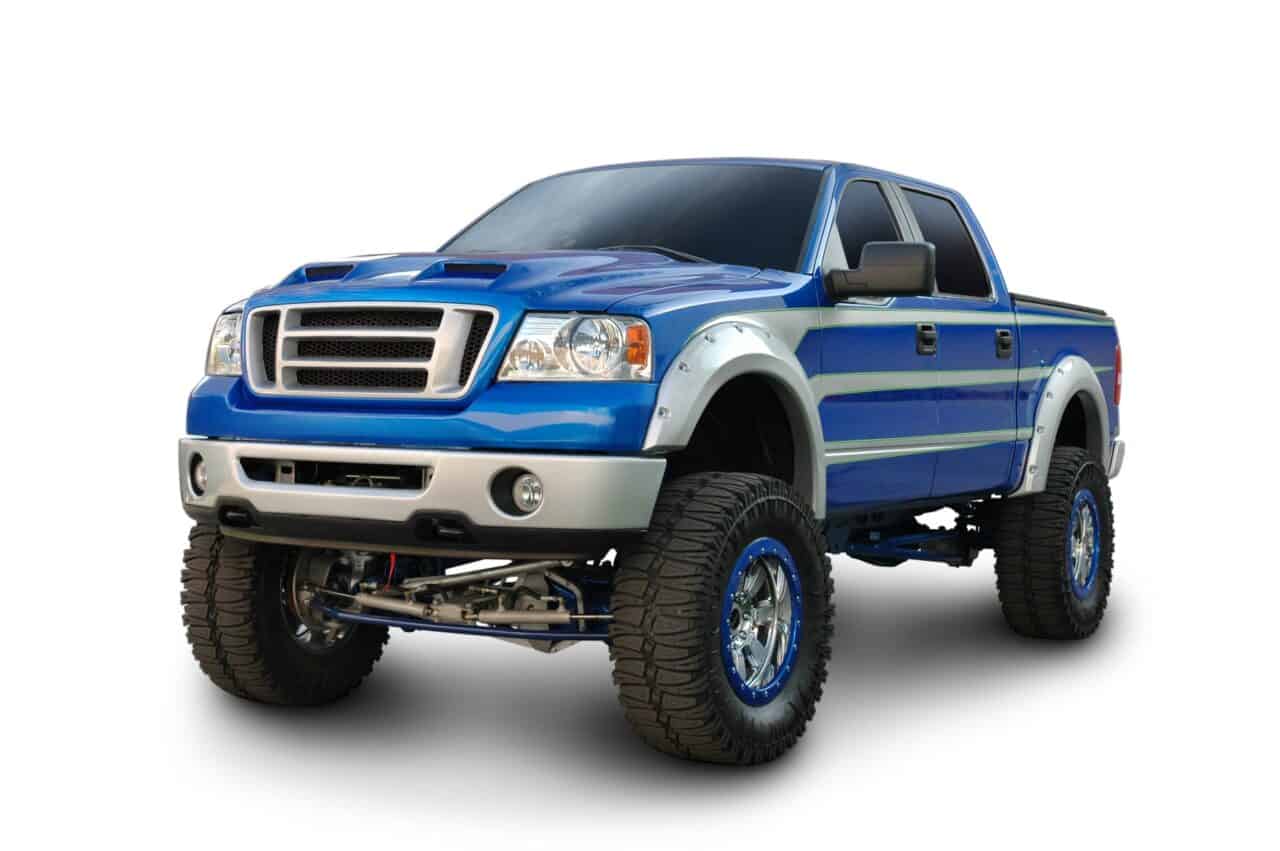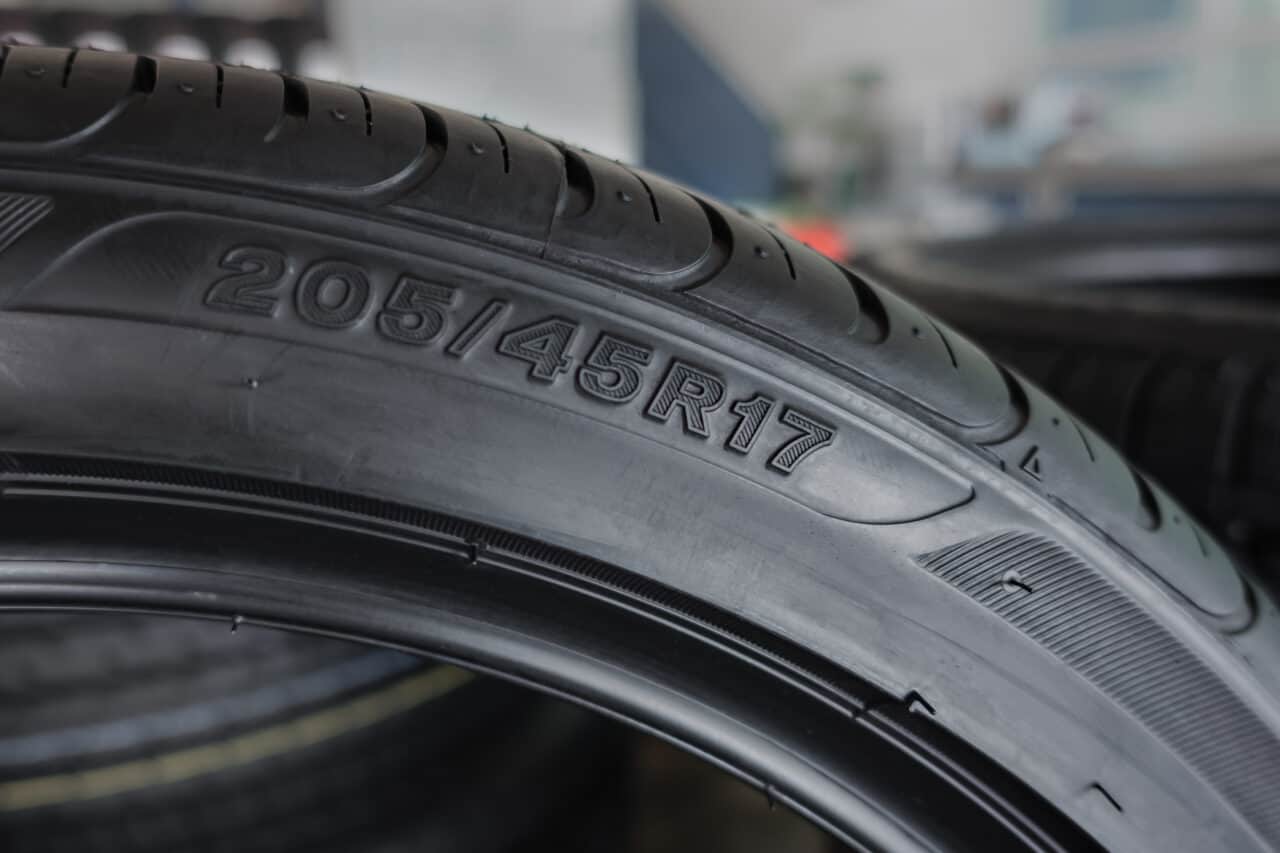What is the Biggest Tire You Can Put On a Stock Chevy 1500?
When a truck is purchased there are always improvements it seems. Vehicles often need maintenance, but some like to change certain aspects of their vehicle to either make it more functional or look better. One such change is the size of the tire and it may be good to know how big one can go when replacing them.
The biggest tire that can be put onto a 2018 stock Chevy 1500 is a 31″ diameter tire. Its dimensions are 265/70-17 and it would fit comfortably without trimming. The normal tire size is a 31″ 255/70-17 but can range based on what you want. Lifting the truck can allow more room for larger tires.
If you are anything like me and are wondering what all that actually means, then it might be a good idea to keep reading. I talked to a mechanic and a good friend of mine who has worked with tires for years now, and he helped me better understand this whole topic.
Largest Tire Size
As stated before, the standard tire size of the Chevy 1500 is a 31 inch 255/70-17. But it can be ranged from many different choices. To keep the average 31-inch diameter but changing the actual tire itself based on what you want. For instance, you can have a 31.5-inch tire with dimensions of 265/65-18.
So yes, I mentioned that the largest tire size is 31.6 inches with dimensions of 265/70-17. But it should be known that this suggestion came from my friend and he mentions that you could go bigger but that size is the biggest one before trimming. Trimming would take place if you were to go bigger than this. For instance, the biggest size you can go in tires for the 2018 Chevy 1500 is actually 285/45-22 which gives a diameter of 32.1 inches, but trimming would be necessary.
Trimming is the action of trimming down the plastic of the wheel well itself, meaning that it removes an area that a larger tire would rub against so that no rubbing occurs.
Here is a website that gives the tire dimensions available for a Chevy 1500. This has many different years models and is very helpful in knowing what is available. https://www.sizemytires.com/make/chevy/silverado-1500
What a Lift Can Do
Another tactic that can be used to avoid rubbing is the act of lifting your truck. Once again, my friend gave me very good advice to understand this better. Lifting your truck is applying a lift kit of a specific height to make the whole body of the truck sit higher than the factory level. The typical height changes are 2 inches, 4 inches, and 6 inches.
My friend gave me a generalized range from the 2 inches to 6-inch lift. With a 2 inch lift, he said that you could fit a 33-inch tire. But dimensions get a little bit different after that size it’s simply just 33/12.5-17. He also said a 33/13.5-17 dimension would work. The main difference is with regards to the width, which I will explain.
Tires of that size simply switch to the first number being the height of the tire itself in total including the rim. Then the second number, in this case, 12.5 or 13.5 is the width of the tire in inches. Finally, the third number is still the wheel or rim of the tire itself.
The final dimension that he gave me was for a 6-inch lift, which obviously gives much more room for the wheel to sit. This means that the dimension can go up to 35/13.5-17. So this tire is much larger than the others sitting at 35 inches in height with a width of 13.5 and the rim is 17 inches in diameter. It’s a large tire.

Is It A Good Idea To Get A Lift?
A lift can be controversial and often debated as being a waste of money. After all, it doesn’t improve the value of the truck at all. It seems to be mostly for show these days. But that is not the functionality of lifting your truck to a higher height. The main purpose that it should be for is to give it a height in which, while off-roading, no damage would come to the bottom of the truck because it is lifted.
It can also give it more accessibilities off-road as well, allowing it to go over bumpier sections and get to places that it wouldn’t be able to access otherwise. The higher the lift the greater the off-road capabilities. But it seems a little pointless on the paved road, in the city, or on the highway, especially considering gas mileage and center of balance.
Lifting your vehicle adds extra weight to the truck, which can cause the truck to have to work harder to accomplish the same thing as a non-lifted truck of the same make and model.
How to Read Tire Dimensions
When I first started talking to my friend and asking him general questions that I only knew because I looked up specific tire sizes on the web, I didn’t know what they meant. How do all of those numbers even begin to make sense? I would see different wheel sizes that supposedly worked for the same truck with the same wheel well. I was confused. I finally asked my friend what it all meant and this is how he described it.
He used the normal tire dimensions of 255/70-17 which I had given him off the internet. He needed that information to know where to start and what dimensions could be changed. Regardless, he knew what he was talking about as we kept the information coming.

To start, he explained that the first number in the tire size is the width of the tire in millimeters. The tire is then described as the rubber itself. This excludes the wheel which is the metal rim of the tire on which the rubber sits. So on a normal tire for the chevy 1500, the rubber is 255 millimeters in width.
Next comes the 70 which is the percentage of the width which gives the sidewall height of the rubber itself. So 70 percent of 255, seen as 255 multiplied by .7, is 178.5 millimeters. For an easier view of the calculation: 255 x .7 = 178.5. This means that the height of the rubber itself is 7.03 inches, converted from millimeters. This distance is from the rim to the top of the rubber, not the whole wheel itself. Converting millimeters to inches is as simple as dividing the millimeters by 25.4. For instance 178.5/25.4 = 7.0275591 or rounded, 7.03.
The next number, in this case, 17, is the diameter of the wheel rim itself. Meaning the metal piece between the rubber is 17 inches from one end to the other. So, if you take the sidewall height and multiply it by two, because it sits on either side of the wheel, and then add 17 you will get approximately 31 inches in total which is the size of the tire. For a simple look at it here is the calculation: (7.03 x 2) + 17 =31.06 or approximately 31 inches.
Different Dimensions Can Be The Same?
Yet, there is still more to know about tire dimensions. My friend further explained that because it is based on percentages you can have different numbers but the same sidewall height. So a tire with dimensions of 255/70-17 can be the same as a tire with these dimensions: 265/65-17. This is because if you increase the width of the tire by 10 and decrease the percentage by 5 it will come out the same.
This also means that you can have a different size rim, specifically 18″ or 20″ but the height of the entire tire will stay the same because the sidewall of the rubber is a different size.
Conclusion
So putting tires onto your truck can be more of an ordeal than you thought, and there are of course different functionalities to different tires based on their width, height, and tread which can be researched elsewhere. But it can allow the truck to have better traction. It would give the truck more control at higher speeds, or it might just be a capable tire for all-purpose use. Either way, the size of the tire is important to take into consideration.
You need to make sure that you won’t be rubbing the tire because it is too big for the wheel well. A tire can be damaged quickly as it rubs often against the wheel well. A way to still have a larger tire in the wheel well is trimming the plastic of the well, but it can cause other problems, including costing more money. So it is good to keep it inside half an inch of the factory size of the original tire.
For the stock Chevy 1500, the normal tire size is 31 inches with a dimension of 255/70-17 meaning that the width of the tire is 255 millimeters or roughly 10 inches. The sidewall is 70 percent of the width which comes out to 178.5 millimeters or just over 7 inches. With the 17 inch rim, the entire tire will come to its height of 31 inches.
That is just one option though as you seek out different sizes that work and find what works for your truck and its preference. You can look into trimming or the lifting option, but regardless of what you do, it is good to know exactly what tires work and how to read tire dimensions.
